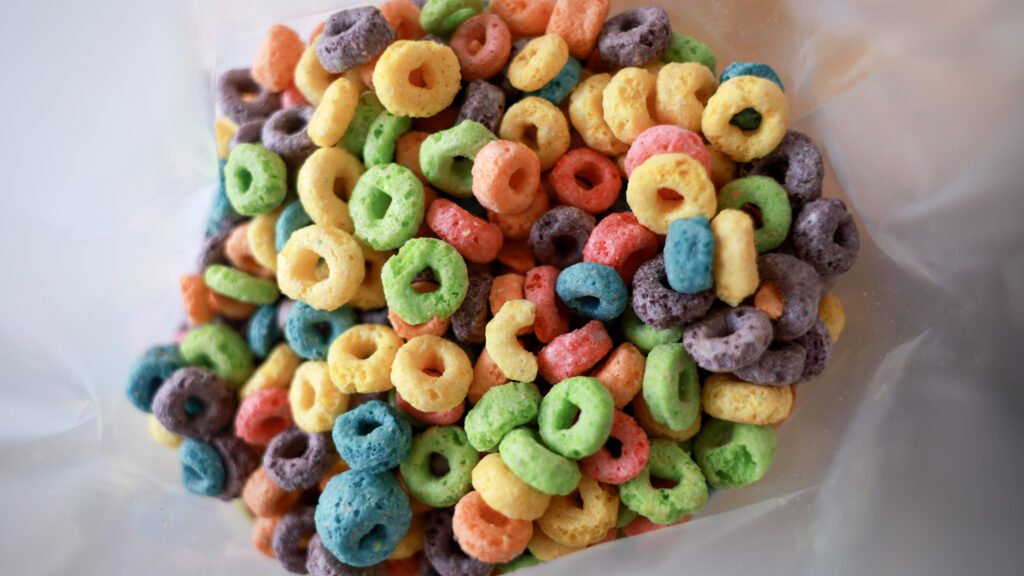Food manufacturers in the United States have made a significant announcement that they will be phasing out eight synthetic dyes from all products by the end of 2026. This move comes in alignment with the growing Make America Healthy Again (MAHA) movement, aimed at addressing the root causes of chronic diseases in the country.
The decision to remove these artificial dyes from food and medications was emphasized by Marty Makary, the head of the Food and Drug Administration (FDA). Makary highlighted the detrimental impact of the “toxic soup of synthetic chemicals” present in the American food supply, linking it to the rise of chronic diseases, especially among children. He stressed that conditions like ADHD and the obesity epidemic are not inherent genetic or willpower issues but rather outcomes of adults exposing children to harmful substances.
While the food companies have voluntarily agreed to eliminate these dyes, there is currently no formal mandate in place. Makary expressed his belief in fostering cooperation without the need for statutory or regulatory changes, emphasizing a friendly approach towards this transition.
The eight synthetic dyes that will be phased out include commonly used ingredients in various products like candies, cereals, beverages, and even unexpected items like pickles and mashed potatoes. These dyes are Blue No. 1, Blue No. 2, Green No. 3, Red No. 40, Yellow No. 5, Yellow No. 6, Orange B, and Citrus Red 2. Makary suggested natural alternatives such as watermelon juice, already utilized by companies in other countries, as substitutes for these petroleum-based dyes.
In addition to removing artificial dyes, the FDA plans to expedite the approval process for four natural color additives. They also aim to accelerate the elimination of red dye No. 3, which was previously banned due to its carcinogenic properties. Collaborating with the National Institutes of Health, the FDA intends to conduct further research on the impact of food additives on children’s health.
Past studies have indicated a correlation between synthetic food dyes and behavioral issues in children, as well as potential cancer risks in animals. California set a precedent with a law banning certain food additives, including red dye No. 3. Makary highlighted how the vibrant colors in processed foods could influence children’s eating habits, contributing to health problems like obesity and diabetes.
Reactions to this announcement from consumer food safety advocates and nutrition experts were mixed. While some acknowledged the positive impact on public health, others criticized the FDA’s regulatory framework for food chemicals. Calls were made for broader systemic changes to prioritize public health over corporate interests and enhance regulations on food marketing to children.
The Consumer Brands Association appreciated the national guidance provided by the Trump administration, emphasizing the safety of current ingredients in use. However, concerns were raised about the cost and complexity of transitioning to natural dyes, with potential supply chain disruptions and increased prices being cited as challenges by industry associations.
Despite these challenges, Makary remains optimistic about food companies’ compliance with the phase-out of artificial dyes. He noted positive discussions with industry representatives and their willingness to adhere to the proposed timeline. As the food industry navigates this transition towards healthier alternatives, the focus remains on safeguarding public health and addressing the underlying causes of chronic diseases in the American population. The transition to healthier food options in the United States is gaining momentum, with key figures like Health Secretary Robert F. Kennedy Jr. leading the charge. At a recent event, Kennedy highlighted the success of other countries that have already made similar transitions, emphasizing the need for change in America’s food system.
Joining Kennedy at the event were familiar faces in the health and wellness industry, including food blogger and activist Vani Hari, physician Mark Hyman, and health entrepreneur Calley Means. West Virginia Gov. Patrick Morrissey also spoke at the event, discussing the state-level action taken to ban most artificial dyes in food earlier this year.
Kennedy’s announcement regarding the removal of artificial dyes from food was just the beginning of a larger effort to improve the quality of food in the country. He expressed his commitment to addressing other harmful ingredients and additives in the food supply, one by one.
Means, a key figure in the movement, has previously outlined a strategy of targeting easily identifiable issues like artificial dyes to garner popular support for the cause. This approach aims to build momentum for broader changes in the food industry.
The Center for Science in the Public Interest (CSPI) has called for more comprehensive solutions, including closing the loophole known as GRAS, which allows food companies to add new chemicals to their products without government oversight. This would require the FDA to assess the safety of thousands of chemicals already in use, some of which have been linked to health risks.
However, the CSPI’s efforts may be hindered by recent staffing cuts at the FDA. Galligan, a spokesperson for the organization, expressed concerns that further cuts under the Trump administration could impede progress in addressing food safety issues.
The push for healthier food options in the U.S. is ongoing, with advocates like Kennedy and organizations like CSPI working towards a safer and more transparent food system. By addressing harmful ingredients and additives, they hope to create a healthier future for all Americans.
STAT’s coverage of chronic health issues is made possible by a grant from Bloomberg Philanthropies, with financial supporters playing no role in editorial decisions.


